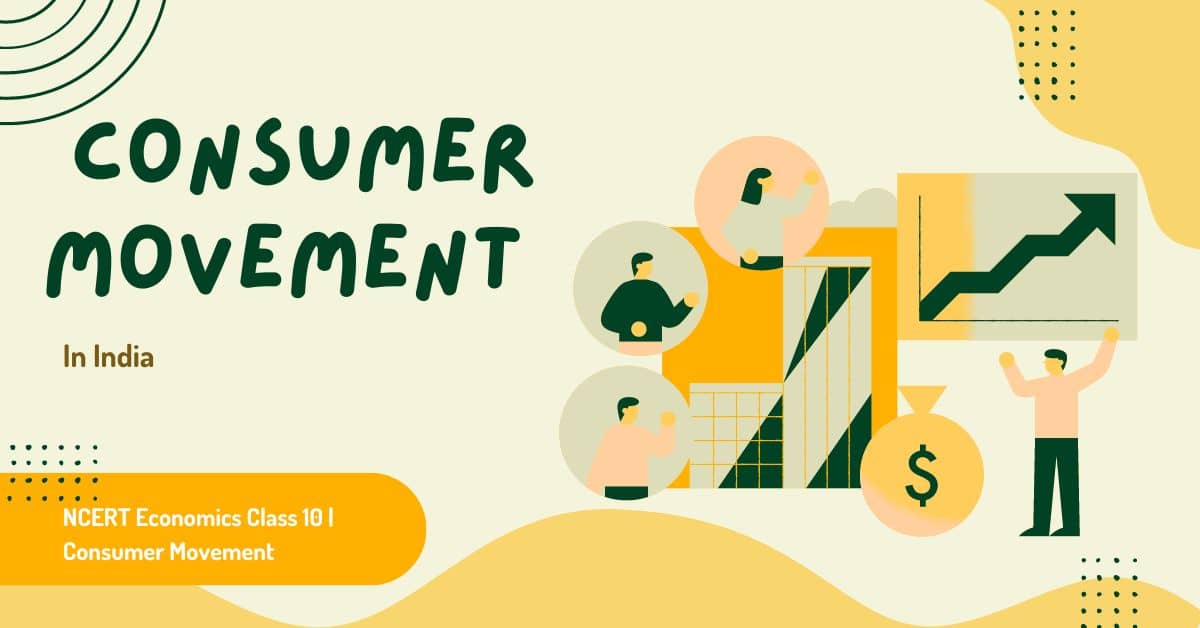NCERT Economics Class 10 | Consumer Movement
Topic & sub-topics covered: Consumer Movement: Consumer Rights (All single detail notes are exam-oriented).
We have discussed in-depth and exam-oriented pointers that can be asked in the board exam of class 10th about “Consumer Movement” which is taken from the NCERT Economics notes for class 10th chapter 5 “Consumer Rights“.
Download the NCERT Economics for Class 10th Chapter 5 Consumer Rights PDF
“Download the NCERT Economics for Class 10th Chapter 5 Consumer Rights PDF” is essential for students. It offers insights into The Consumer In The Marketplace, aiding comprehension of Consumer Rights. Students gain access to in-depth analyses, case studies, and theories, enhancing their understanding.
NCERT Class 10 Economics Chapter 5 Consumer Rights Class 10 Notes PDF
This chapter provides detailed insights into the rights and responsibilities of consumers, the role of consumer protection laws like the Consumer Protection Act (COPRA), and the importance of consumer awareness in today’s market-driven economy. By downloading this resource, you equip yourself with valuable knowledge that helps in exams and empowers you as an informed consumer.
Consumer Movement
1. Origin of the Consumer Movement:
- The consumer movement emerged due to dissatisfaction with unfair practices by sellers.
- Initially, no legal system existed to protect consumers from exploitation.
2. Consumer Response Before the Movement:
- Consumers avoided buying from brands or shops they were unhappy with.
- The responsibility for ensuring quality was placed on consumers.
3. Awareness and Shift in Responsibility:
- Over time, organisations worked to raise awareness among consumers.
- This led to a shift in responsibility towards sellers to ensure the quality of goods and services.
4. Development of the Consumer Movement in India:
- It originated as a ‘social force’ to protect consumer interests against unethical trade practices.
- It is triggered by issues like food shortages, hoarding, black marketing, and adulteration in the 1960s.
5. Activities of Consumer Organisations:
- In the 1970s, consumer organisations focused on writing articles and holding exhibitions.
- Formed groups to address malpractices in ration shops and overcrowding in public transport.
6. Recent Trends:
- There has been a recent increase in the number of consumer groups in India.
7. The success of the Consumer Movement:
- The consumer movement effectively pressured businesses and the government.
- Aimed to correct unfair business practices harmful to consumers.
8. Enactment of the Consumer Protection Act (1986):
- The Indian government took a significant step in 1986 by enacting the Consumer Protection Act.
- The act is commonly referred to as COPRA.
9. Importance of COPRA:
- COPRA was a key legislative measure to safeguard consumer rights in India.
- Further details about COPRA are covered in subsequent lessons.
Consumers International
1. UN Guidelines for Consumer Protection (1985):
- Adopted by the United Nations in 1985.
- Served as a tool for nations to implement consumer protection measures.
- Enabled consumer advocacy groups to press governments for better consumer protection.
2. Impact on the International Consumer Movement:
- The UN Guidelines became the foundation of the global consumer movement.
- Encouraged nations worldwide to adopt consumer protection measures.
3. Role of Consumers International:
- Consumers International is an umbrella body for the global consumer movement.
- Represents over 200 member organisations from more than 100 countries.
- Acts as a global advocate for consumer rights and protection.
Next & Previous Topics of NCERT/CBSE Economics Class 10 Chapter 5: Consumer Rights
| Topics No. | Topics Name |
|---|---|
| 1 | The Consumer In The Marketplace |
| 2 | Consumer Movement |
| 3 | Consumer Rights |
| 4 | Learning To Become Well-informed Consumers |
| 5 | Taking The Consumer Movement Forward |


Perfectly explained the topic
Thank you so much. Keep learning.